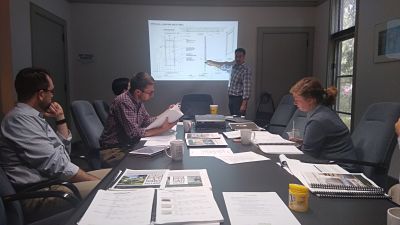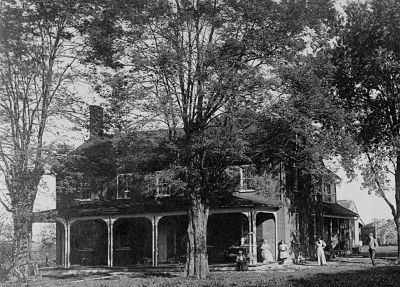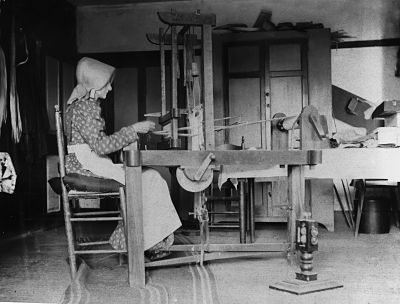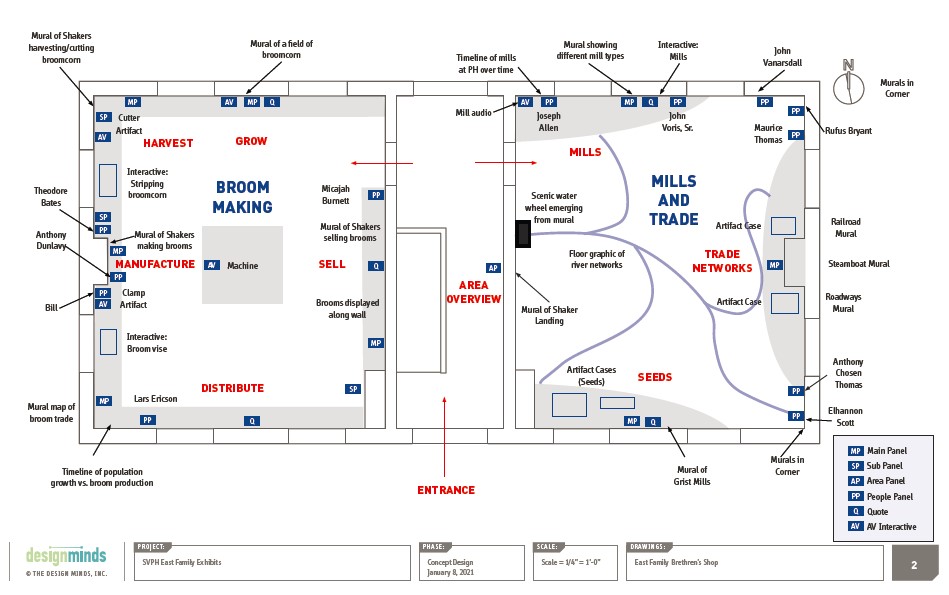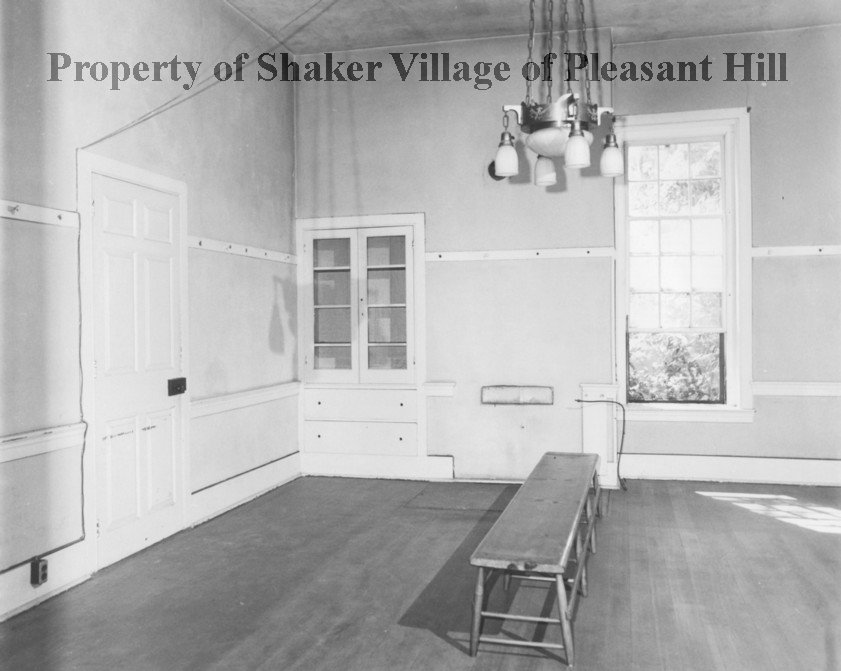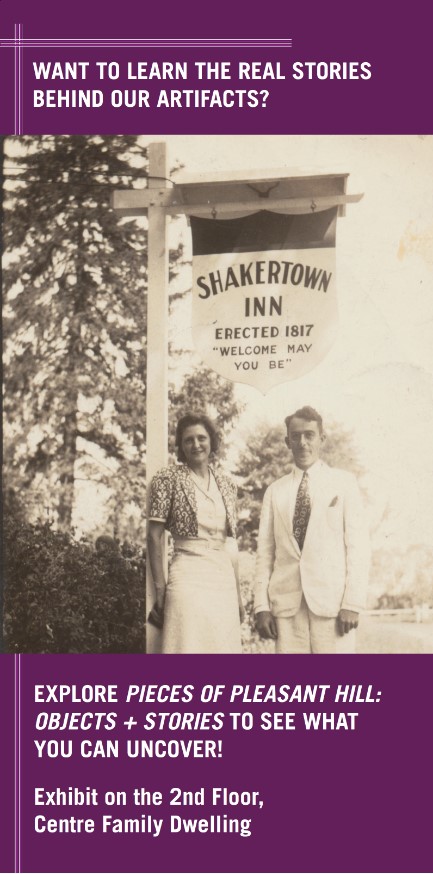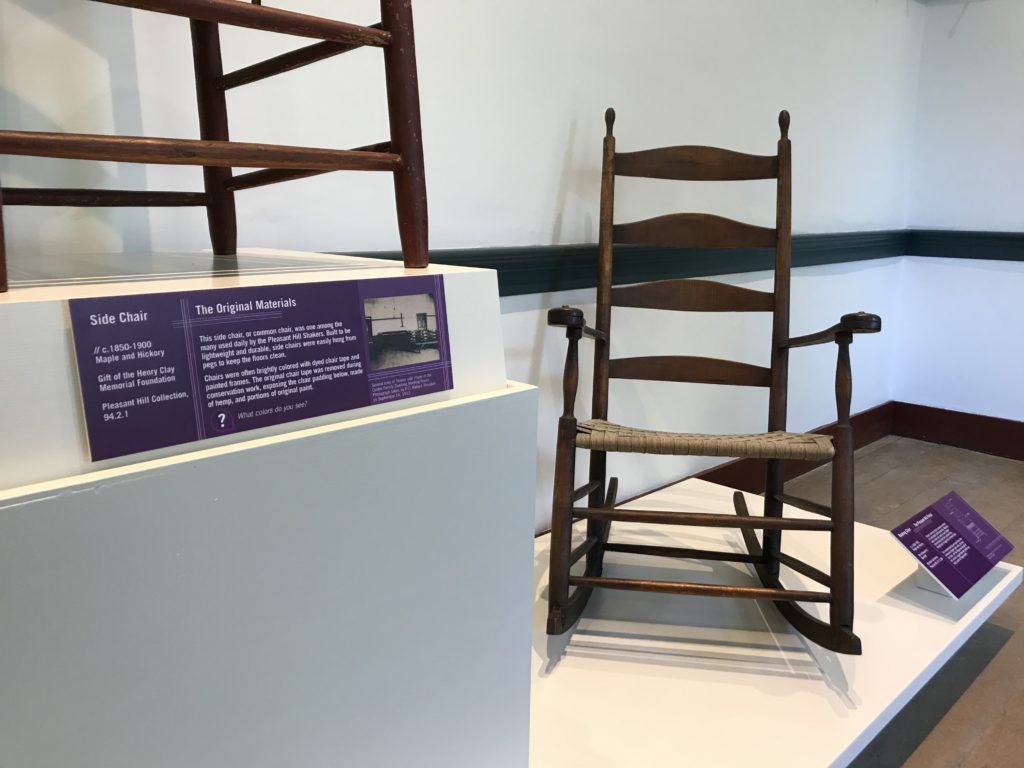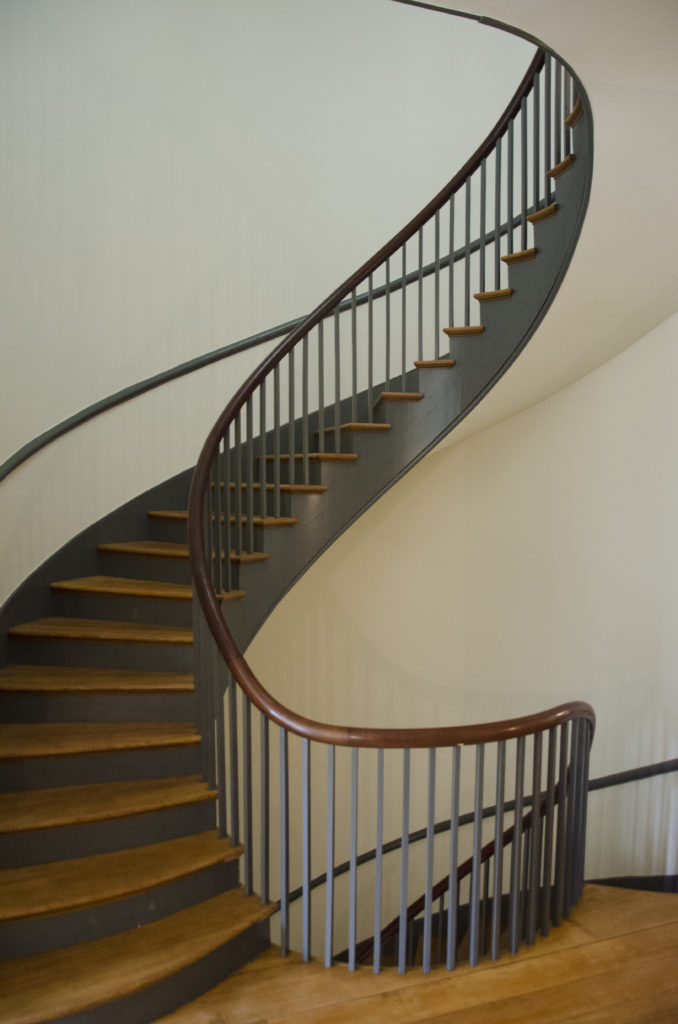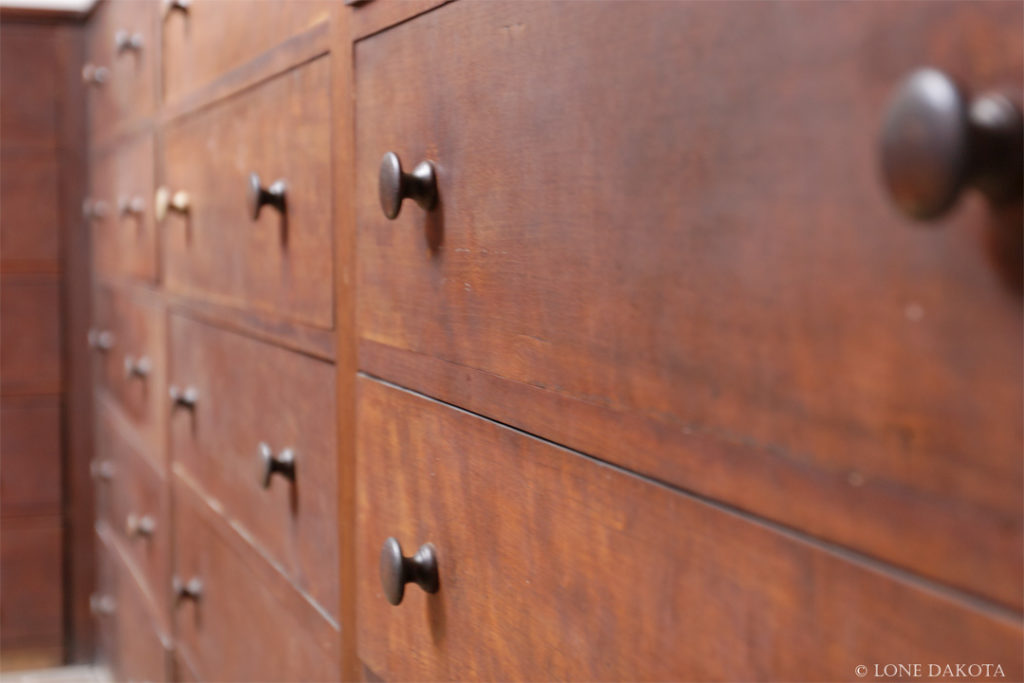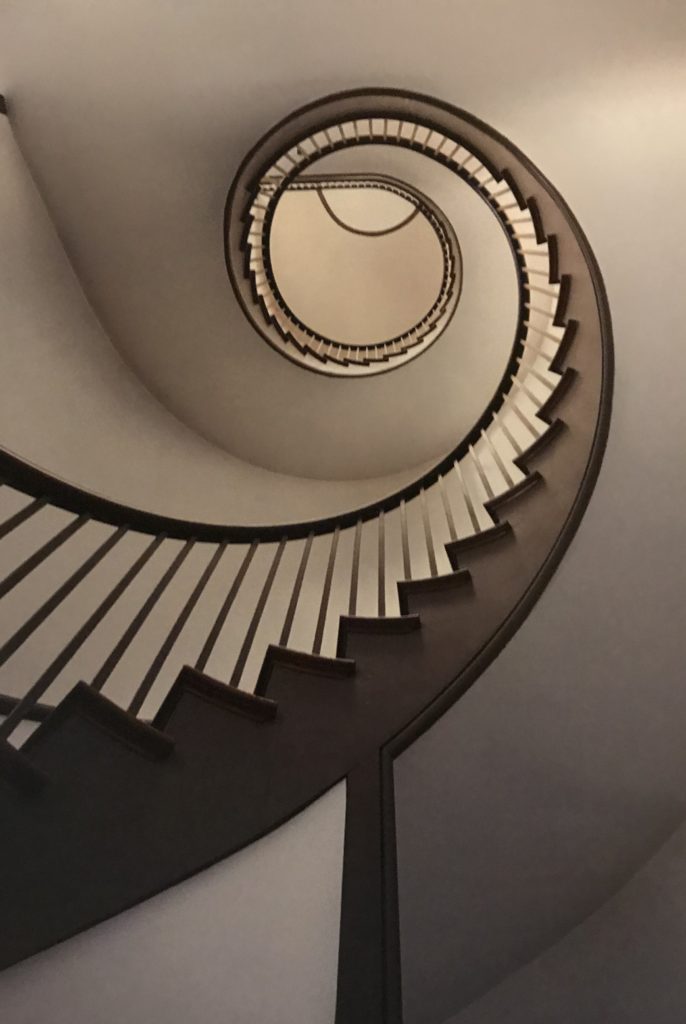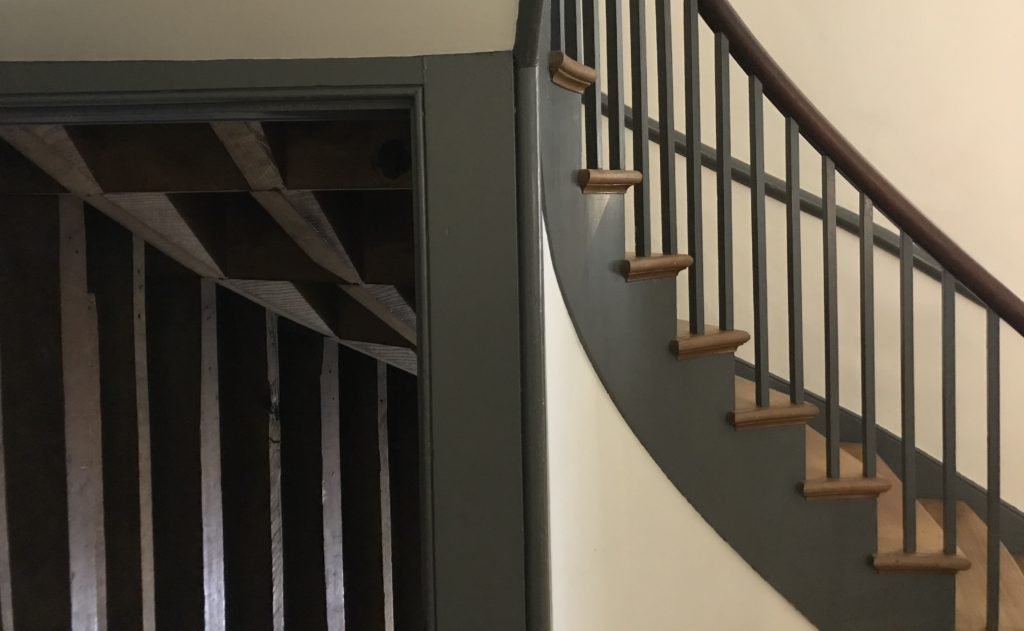Melissa Williams, Development Coordinator
Imagine yourself standing on the turnpike here at Shaker Village. Close your eyes for a moment.
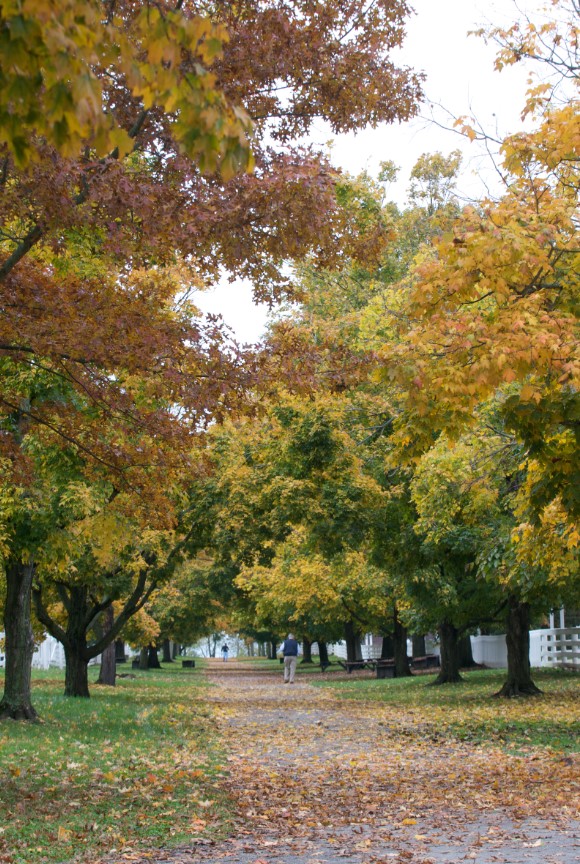
Can you feel the soft, rustling breeze through the trees? The sun shining warm on your face? Each step you take is accompanied by the crunch of gravel on the path. In the distance the ducks are quacking, the donkey brays. There’s a group of people up ahead on a tour listening intently to the guide. They are nodding and smiling.
How do you feel in the moment?
This Place Matters
When our nonprofit organization formed in the 1960s, the original board members and the public worked tirelessly to restore the Village. It was a not an easy undertaking. They persevered because they felt the same way you feel when you visit Pleasant Hill: this place is special.

How is it special? It’s hard to articulate an answer to that question.
It’s educational. It’s entertainment. It’s fun. It’s an escape.
It’s a sense of peace. A feeling of lightness. A connection to nature and to beauty.
It’s hope in the midst of a chaotic world.
Finding Relevance Today
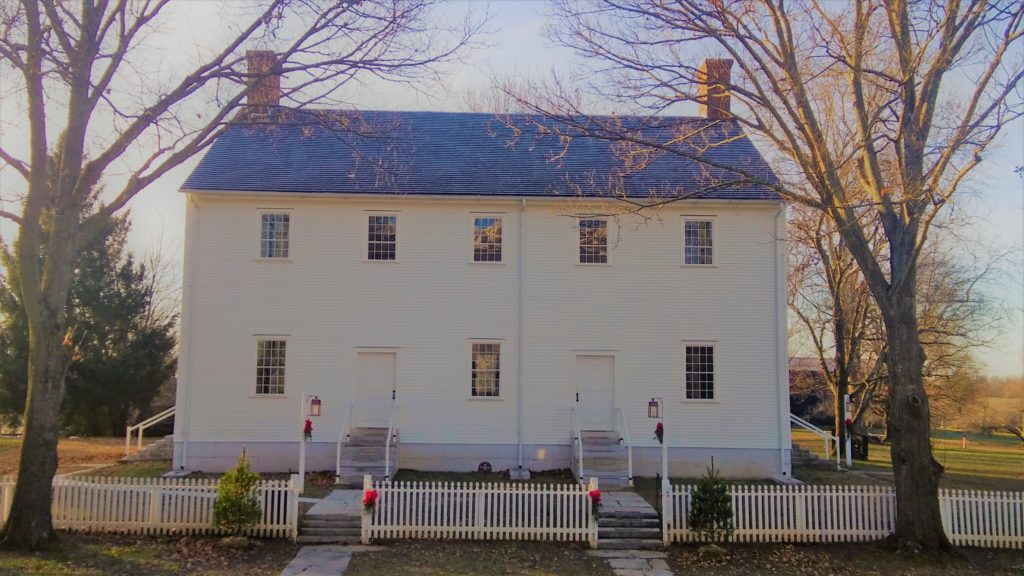
The Shakers built their environment to reflect their view of Heaven on Earth. Interestingly, their view of Heaven on Earth was adapted over time – both proactively and reactively. One notable example was the shift in how the Village was oriented. The community was initially laid out north to south. Within the first 20 years of establishing the Village, the orientation shifted to run east to west as the turnpike remains today. While there were likely multiple factors in this decision, the New Madrid earthquake in 1811 damaged the original meeting house. The need to construct a new Meeting House may have been the impetus for this change.
It’s lessons like this that the Pleasant Hill Shakers left us to examine. Their ability to adapt over time and their resilience is an important example that we can find relevance in as we navigate our changing world.
Celebrating National Arts and Humanities Month
Today more than ever, we all need someplace where we can take refuge. A place where we can rest. Where we can reflect. Where we can consider steps we can each individually take to help adapt our communities to be more inclusive, equitable, cohesive and proactive.
This year we join the Institute for Museum and Library Services (IMLS), The National Endowment for the Arts (NEA), and The National Endowment for the Humanities (NEH) to celebrate the 35th anniversary of National Arts and Humanities Awareness Month.
“Three and a half decades after its official recognition, National Arts and Humanities Month takes on new relevance to American life today. Music inspires and uplifts us, poems and stories spark our imagination, and museums teach us about the world and ourselves. The arts and humanities have the power to unite us, to heal us, to sustain us, to help us better understand each other, and to guide us through challenging times.” – joint statement by IMLS, NEA and NEH.
Shaker Village is a place where everyday we think about the human experience and study history, philosophy, religion, community development and more. Sixty years ago, the leaders of our nonprofit could not have guessed just how important Shaker Village would be today, but today it’s certain that Pleasant Hill will remain special for generations to come.
